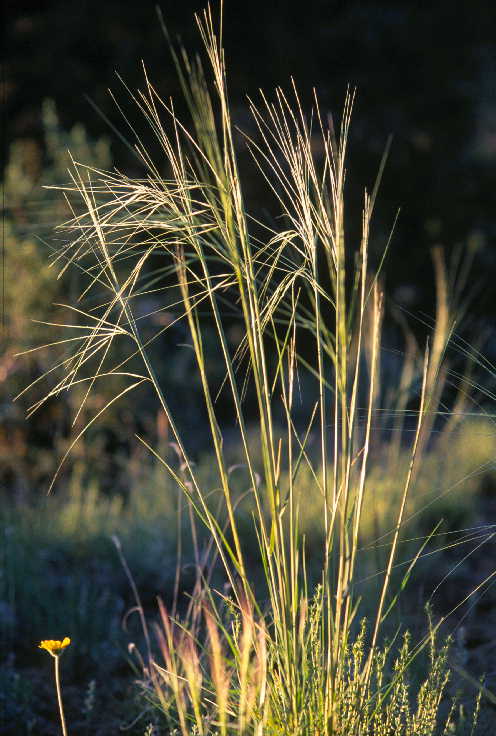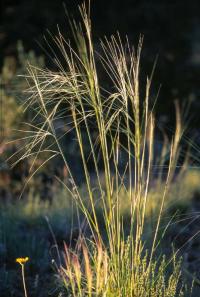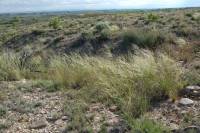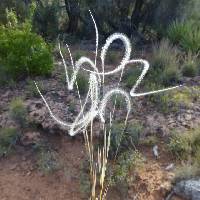Plants perennial; cespitose, not rhizomatous. Culms 12-110 cm, erect, not branching at the upper nodes; prophylls shorter than the sheaths. Leaves not overwintering, not basally concentrated; cleistogenes not developed; sheaths smooth; auricles absent; ligules membranous, frequently ciliate; blades 4-40 cm long, 0.5-4.5 mm wide, usually tightly involute, adaxial surfaces conspicuously ridged, apices narrowly acute, not sharp. Inflorescences terminal panicles, contracted or open. Spikelets 15-60 mm, with 1 floret; rachillas not prolonged beyond the base of the floret; disarticulation above the glumes and beneath the floret. Glumes 15-60 mm long, 2-4 mm wide, tapering from near the base to a hairlike tip; florets 7-25 mm, narrowly cylindrical; calluses 2-6 mm, sharp, densely strigose distally; lemmas indurate, smooth, margins flat, slightly overlapping at maturity, the upper portion fused into a papillose, ciliate crown, awned, lemma-awn junction distinct; awns 50-225 mm, persistent, twice-geniculate, often weakly so, lower segments twisted and scabrous to pilose, terminal segment not twisted, usually scabridulous or pilose; paleas equal to the lemmas, flat, pubescent, coriaceous, 2-veined, veins terminating at the apices, apices indurate, prow-tipped; anthers 3, 1.2-9 mm. Caryopses fusiform, not ribbed. x = 11. Name from the Greek hesperos, 'west', and the generic name Stipa.






